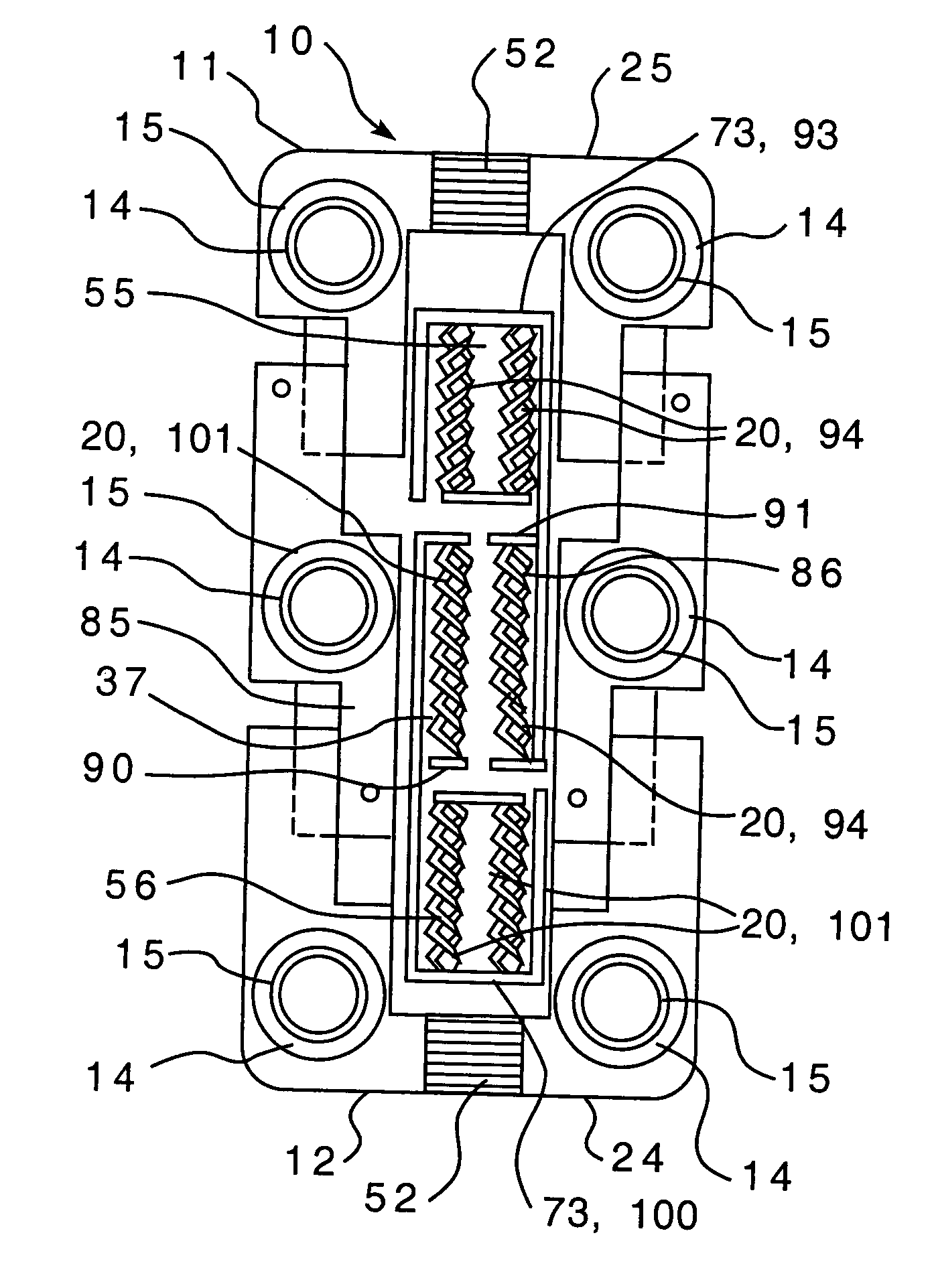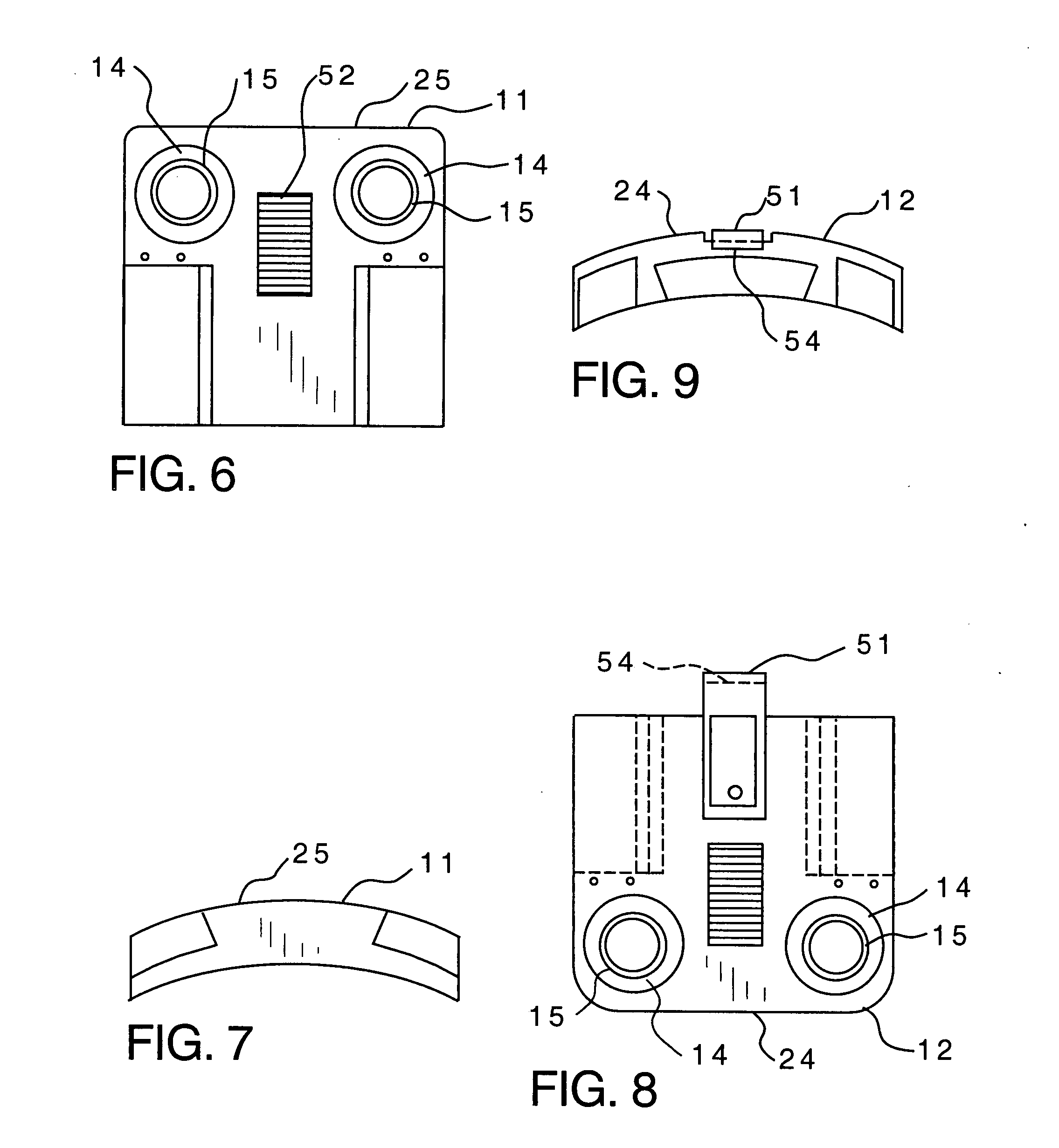Cervical compression plate assembly
a cervical compression plate and assembly technology, applied in the field of spinal surgery, can solve the problem of not allowing lagging of the plate to the vertebrae, and achieve the effect of avoiding a distraction pseudo-arthrosis
- Summary
- Abstract
- Description
- Claims
- Application Information
AI Technical Summary
Benefits of technology
Problems solved by technology
Method used
Image
Examples
Embodiment Construction
[0046] Referring first to the embodiment illustrated in FIGS. 1 and 2, the cervical compression plate assembly 10 is provided with screw receiving elements 11 and 12 at opposite ends thereof which are configured for engaging bone fixation screws 13, illustrated in FIGS. 3 and 4, extending from respective vertebral elements of the human cervical spine. The screw receiving elements 11 and 12 in this embodiment are each respectively provided with spaced identical screw head seats 14 configured for seating the heads of the bone fixation screws at different attitudes. The bone fixation screws 13 are provided with heads that have underside perimeter edges which engage the seats 14. Seats 14 are annular concave so that the screws 13 may be received within and on seats 14 at different desired attitudes or angles. This permits the surgeon to lag cervical compression plate assembly 10 securely to the cervical spine as desired. Accordingly, the angle by which the bone fixation screws 13 pass t...
PUM
 Login to View More
Login to View More Abstract
Description
Claims
Application Information
 Login to View More
Login to View More - R&D
- Intellectual Property
- Life Sciences
- Materials
- Tech Scout
- Unparalleled Data Quality
- Higher Quality Content
- 60% Fewer Hallucinations
Browse by: Latest US Patents, China's latest patents, Technical Efficacy Thesaurus, Application Domain, Technology Topic, Popular Technical Reports.
© 2025 PatSnap. All rights reserved.Legal|Privacy policy|Modern Slavery Act Transparency Statement|Sitemap|About US| Contact US: help@patsnap.com



